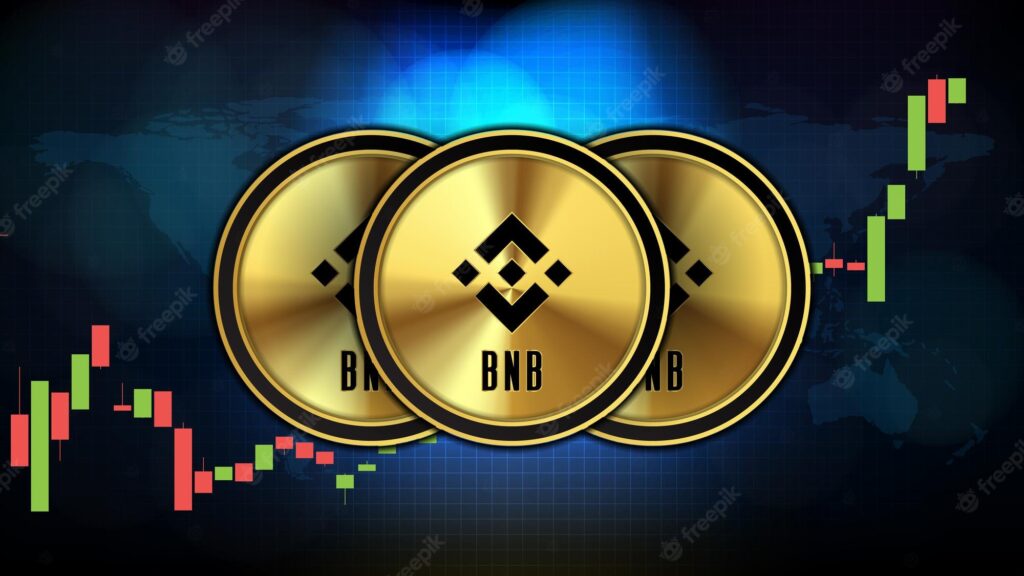The Bitcoin Therapist, a well-known pseudonymous writer of a Bitcoin newsletter, recently recounted the serendipitous beginning of his cryptocurrency journey on X (formerly Twitter).
He described how a chance encounter with Bitcoin led him into the crypto world.
He began his crypto investments with Dogecoin, putting in a few thousand dollars.
To his surprise, the value of his investment tripled overnight.
After cashing out, he delved into researching Bitcoin and quickly became a firm believer in its potential.
“It took me a few days before it clicked,” he noted. Within a short span, he transitioned all his investments to Bitcoin, eventually going “100% all in on Bitcoin.”
Despite his early exit from Dogecoin, which later surged by 40 times, The Bitcoin Therapist expressed gratitude for his initial foray into cryptocurrencies, acknowledging the significant gains he made.
This experience starkly contrasted with the fate of many newcomers who lose their entire investment, commonly referred to in crypto slang as getting “REKT.”
READ MORE:Cryptocurrency Users Settle with Ex-FTX CEO Sam Bankman-Fried in Class-Action Lawsuit
Reflecting on his journey, he stated, “Ironic, but true. I haven’t touched anything but Bitcoin since and I don’t intend to.”
Over the past three and a half years, Bitcoin has seen a price increase of 270%, while Dogecoin has astonishingly risen by 4,670%. This dramatic growth underscores the volatile and unpredictable nature of cryptocurrencies.
The narrative shared by The Bitcoin Therapist highlights the capricious paths to success within the cryptocurrency landscape, serving as a powerful reminder of the potential for financial transformation through fortuitous events.
He learned that chasing quick profits through lesser-known “meme coins” was less important than pursuing lasting financial independence through Bitcoin, which he valued for its rarity and potential as a liberating financial tool.
The Bitcoin Therapist has spent a year immersed in learning about various aspects of the crypto industry, gaining a deep understanding of the space.
His story emphasizes the importance of education and strategic investment in achieving financial freedom.
The broader implications of meme coins and Bitcoin’s role as a mainstream asset class are poised to be key discussion points at the upcoming Benzinga Future of Digital Assets event on November 19, where such expert insights will further illuminate the evolving dynamics of the cryptocurrency market.
To submit a crypto press release (PR), send an email to sales@cryptointelligence.co.uk.
Franklin Templeton, a prominent asset management firm, has unveiled its spot Ether exchange-traded fund (ETF), known as the Franklin Ethereum TR Ethereum ETF (EZET), on the Depository Trust and Clearing Corporation (DTCC) website, a key platform for securities transactions in the United States.
Displayed within the DTCC website’s “Create/Redeem” section, the presence of the ETF suggests it is open for creation and redemption.
However, this listing doesn’t guarantee approval for Franklin’s spot Ether ETF application with the United States Securities and Exchange Commission (SEC).
While the DTCC website commonly showcases securities eligible for trading and settlement, including ETFs that have undergone specific registration or compliance procedures, the SEC holds authority over the approval status of ETF filings. This decision hinges on diverse regulatory criteria and considerations.
Having submitted its Form S-1 to the SEC on Feb. 12, the $1.5 trillion asset management firm sought approval for a spot Ether (ETH) ETF. If given the green light, this ETF would be traded under the name “Franklin Ethereum ETF” on the Chicago Board Options Exchange.
READ MORE: Robinhood Broadens Cryptocurrency Reach: New Yorkers Gain Access to SHIB, AVAX, and COMP Trading
The SEC opted to postpone its decision regarding Franklin Templeton’s ETF application on April 23, extending the review timeline for the proposed rule change related to the listing and trading of Franklin Ethereum Trust shares on the Cboe BZX Exchange.
This extension grants the SEC until June 11, providing an additional 45 days for thorough evaluation.
Various industry giants such as BlackRock, Grayscale, VanEck, and ARK Invest have also joined the race for spot Ether ETFs.
However, the likelihood of SEC approval for spot Ethereum ETFs differs from that of spot Bitcoin ETFs, which were approved in January.
In March, Bloomberg ETF analyst Eric Balchunas estimated the probability of the SEC approving a spot Ether ETF in May at approximately 35%.
He noted the SEC’s relatively less active stance compared to the Bitcoin ETF application process and highlighted the potential impact of SEC Chair Gary Gensler’s position on Ether, which remains unclear as Gensler has refrained from definitively classifying Ether as a security.
To submit a crypto press release (PR), send an email to sales@cryptointelligence.co.uk.
On April 30, the sentencing of Binance founder Changpeng “CZ” Zhao looms as U.S. authorities gear up. Prosecutors, urging a jail term, advocate for a 36-month sentence following Zhao’s admission of guilt in violating anti-money laundering laws, as detailed in a court filing on April 23.
“In light of Zhao’s intentional breach of U.S. law and its repercussions, a 36-month sentence surpassing standard guidelines is justified,” stated prosecutors in the submission to the U.S. district court for the Western District of Washington.
They emphasized that this, combined with a $50 million fine, strikes a balance aligned with sentencing objectives under 18 U.S.C. § 3553(a).
Zhao confessed to breaching U.S. money laundering regulations and relinquished his CEO role at Binance in November 2023. Additionally, he incurred a direct $50 million penalty, alongside broader fines imposed on Binance.
Federal guidelines cap Zhao’s potential prison term at 18 months, a limitation he agreed not to contest. He has remained free on a $175 million bond.
READ MORE: Blockchain Association and Texas Crypto Group Sue SEC Over Dealer Rule Changes, Claiming Overreach
Acknowledging his transgressions, Zhao, along with Binance, consented to a $4.3 billion settlement with the U.S. government to conclude the legal proceedings. This agreement allowed Binance to sustain its operations under U.S. regulatory compliance.
Despite stepping away from Binance, Zhao maintains involvement in the cryptocurrency sector. In March, he unveiled Giggle Academy, an educational initiative focused on crypto and blockchain, emphasizing its exclusion of new tokens.
Geared towards toddlers aged two to three, the project aims to foster early engagement with these technologies.
Recently, Zhao unveiled Giggle Academy’s logo, embodying youth, positivity, and growth while paying homage to Binance’s legacy.
“We wanted the Giggle Academy logo to exude youthfulness, fun, positive vibes, and evolution. It’s also a nod to our roots at Binance,” he expressed on April 24.
To submit a crypto press release (PR), send an email to sales@cryptointelligence.co.uk.
Lucie, the official marketing expert of the Shiba Inu team, recently addressed the SHIB community on X/Twitter with a significant warning about investment choices in projects, particularly those involving the layer-2 blockchain Shibarium.
Lucie emphasized that the failure of some projects could be attributed to poor management or insufficient growth, rather than fraudulent schemes like rug pulls.
She cautioned investors, stating, “Even the best can get their fingers burned.” She underlined her priority, asserting, “I’m $SHIB first everything comes after…”
In her communications, Lucie also provided guidance for new projects aiming to launch on Shibarium.
She stressed the importance of self-reliance, noting that new initiatives do not require endorsements to be successful. Lucie outlined key strategies for these projects, including the necessity of presenting a clear roadmap and defining achievable goals.
READ MORE: Victims of $6.2 Billion Chinese Fraud Scheme Seek UK Help to Recover $4.3 Billion in Seized Bitcoin
She advised projects to actively engage with their communities across major social media platforms, such as Telegram and Discord, emphasizing respect and active participation as crucial for maintaining a good relationship with community members.
Furthermore, Lucie advised against spending on marketing. Instead, she recommended focusing on organic community growth and securing genuine supporters to establish a more sustainable and engaged supporter base.
Her guidance reflects a strategic approach to fostering long-term success and stability for projects within the Shibarium ecosystem.
To submit a crypto press release (PR), send an email to sales@cryptointelligence.co.uk.
On Monday, the cryptocurrency market saw a notable surge led by Bitcoin’s recovery to $72,000, boosting the memecoin sector, including Dogecoin (DOGE), Shiba Inu (SHIB), Pepe Coin (PEPE), and Bonk.
These assets demonstrated significant gains, underscoring heightened investor interest amid the market’s uptrend.
Pepe Coin, in particular, has exhibited a sideways trading pattern for over a month, aligning with the bullish pennant pattern’s converging trendlines.
This setup, occurring above the 50% retracement level, suggests a robust retracement, enabling buyers to reclaim control of the asset.
On April 5th, Pepe Coin’s price rebounded from the pattern’s support trendline, climbing 20% to reach $0.0000076.
Should the market maintain its bullish momentum, the coin’s value could see an additional 8% increase, aiming for the overhead trendline at $0.0000082.
A successful breach of the pennant pattern would indicate a buyer’s market, potentially extending the recovery trend towards the initial target of $0.0000108, with further aspirations reaching $0.000013 and potentially $0.0000167.
Conversely, a drop below the lower support trendline could escalate selling pressure, potentially driving the Pepe Coin price down to $0.00000313, exacerbating the ongoing correction.
The Moving Average Convergence Divergence (MACD) analysis reveals that the MACD (blue) and Signal (orange) lines moving flat above the midline typically signal a beneficial pullback for buyers, offering them an opportunity to gather strength.
This indicator, along with the overall market’s bullish trend and Pepe Coin’s specific pattern dynamics, paints a complex picture of potential growth tempered by cautionary notes regarding possible downturns.
To submit a crypto press release (PR), send an email to sales@cryptointelligence.co.uk.
As the Terraform Labs versus United States Securities and Exchange Commission (SEC) trial nears its conclusion, attorneys have alleged that the crypto firm disseminated numerous false claims about its platform to investors.
According to a report from Reuters on April 5, SEC lawyers asserted in the U.S. District Court for the Southern District of New York that Terraform’s narrative was “built on lies.”
These falsehoods purportedly encompassed assurances regarding the stability of the algorithmic stablecoin TerraUSD (UST) and an integration with a South Korean payment application.
Louis Pellegrino, attorney for Terraform, reportedly defended co-founder Do Kwon’s public statements as truthful, suggesting that the SEC’s case relied on selectively presented information.
The civil trial against the SEC emerged over a year subsequent to the commission’s filing of a lawsuit against Terraform in February 2023.
“At that juncture, the regulator alleged that the platform and Kwon had “orchestrated a multi-billion dollar crypto asset securities fraud.”
Throughout the trial, SEC attorneys likened Terra to a “house of cards” that collapsed for investors in 2022.
The fallout from Terra’s demise contributed to a significant downturn in the crypto market, impacting entities such as FTX, BlockFi, Celsius, and others, which were subsequently compelled to declare bankruptcy.
The trial has proceeded in Kwon’s absence, as the Terraform co-founder remains in Montenegro pending a decision on extradition requests from the U.S. and South Korea.
Kwon was apprehended in March 2023 on charges related to the use of falsified travel documents.
In January, Judge Jed Rakoff postponed the start date of the SEC v. Terraform Labs trial to March 25, in a bid to accommodate Kwon.
Other prominent figures in the crypto sphere facing legal proceedings in the U.S. include former Celsius CEO Alex Mashinsky, slated for a criminal trial in January 2025, and former Binance CEO Changpeng Zhao, set for a sentencing hearing on April 30.
To submit a crypto press release (PR), send an email to sales@cryptointelligence.co.uk.
Bitcoin is on the cusp of entering a critical phase known as the “danger zone” just days before its next halving, an event that could see its value dip, as historically observed.
This period, highlighted by crypto analyst Rekt Capital in a recent X post, has in the past witnessed significant price retractions.
“In 2 days, Bitcoin will officially enter the ‘Danger Zone’ […] where historical pre-halving retraces have begun,” stated Rekt Capital.
“Historical data supports this claim, with Bitcoin experiencing a 40% fall in 2016 and a 20% drop in 2020 during the 14 to 28 days leading up to its halving events.
“Earlier in January, Rekt Capital had foreseen a rally and subsequent retrace surrounding the halving.
This prediction held true as Bitcoin outperformed expectations, surpassing its previous all-time high of $68,990 in March, ahead of a halving for the first time.
With the next halving anticipated on April 20, as per CoinMarketCap, Bitcoin’s value has slightly retreated from its March 14 peak, according to Cointelegraph Markets Pro.
READ MORE: Spot Ether ETFs Have 85% Chance of Being Approved in May
Amidst these fluctuations, Binance CEO Richard Teng remains optimistic.
Speaking at a Bangkok event, Teng projected Bitcoin could exceed $80,000 by year-end, fueled by institutional investments and the impact of new U.S. exchange-traded funds (ETFs), which currently manage $57 billion.
Teng emphasized the growth potential despite expected price volatility.
Echoing a sentiment of resilience, Crypto.com’s CEO Kris Marszalek viewed the recent price correction as beneficial, suggesting it curbed excess leverage.
He observed a momentum in Bitcoin’s trajectory similar to its late 2020 rally and anticipates a more gradual price increase.
Marszalek highlighted Bitcoin’s long-term value, suggesting it’s an asset meant for decades, not merely short-term speculation.
This outlook reflects a broader confidence in Bitcoin’s enduring appeal and its ability to navigate through its cyclical challenges, including the impending “danger zone.”
To submit a crypto press release (PR), send an email to sales@cryptointelligence.co.uk.
Spot Bitcoin exchange-traded funds (ETFs) in the United States experienced a significant decrease in net inflows, with only $132 million recorded on March 14.
This represented the lowest level of net inflows in the last eight trading sessions and a drastic 80% reduction from the $684 million recorded on March 13.
The decline on March 14 followed another decrease from the previous day, contrasting sharply with the record single-day inflows of $1.05 billion seen on March 12.
Despite the notable drop, the total inflow into Bitcoin ETFs was $390 million on March 14, factoring in a substantial $257 million in outflows from the Grayscale Bitcoin Trust ETF (GBTC), leading to the net inflow figure of $132 million.
The VanEck Bitcoin Trust ETF and Fidelity’s Wise Origin Bitcoin Fund also saw inflows, albeit modest, at $13.8 million and $13.7 million, respectively.
Despite GBTC’s significant outflows, the overall ETF market managed to maintain positive net flows on that day.
READ MORE: Elizabeth Warren Faces Unprecedented Challenge from XRP Advocate in Upcoming Senate Race
Leading the inflows, BlackRock’s iShares Bitcoin Trust ETF attracted $345 million. Cumulatively, the U.S. spot Bitcoin ETF market has seen impressive inflows, nearing the $12 billion mark after just 44 days of trading activity.
This trend of declining ETF inflows is occurring alongside a downturn in the broader crypto market, highlighted by a drop in BTC prices below $69,000.
The falling ETF inflows were mirrored by BTC price movements, which saw a new all-time high of over $73,000 on March 13 before falling to around $66,000 on March 15.
This price dip resulted in significant liquidations, with CoinGlass reporting that 193,431 traders were liquidated, totaling $682.14 million in the previous 24 hours.
Market analysts suggest that the current volatility, regulatory uncertainty, and macroeconomic considerations are prompting investor caution.
The ongoing decline in ETF inflows and BTC prices is also being watched closely in relation to the upcoming Federal Open Market Committee meeting, which is expected to provide insights into the Federal Reserve’s future interest rate decisions.
To submit a crypto press release (PR), send an email to sales@cryptointelligence.co.uk.
The BNB cryptocurrency witnessed a remarkable surge, increasing by 62% within 30 days, reaching a two-year peak at $489.50 on March 8.
This significant rise not only highlights BNB’s growth amid broader market gains but also cements its position as the third-largest cryptocurrency by market capitalization, stablecoins excluded.
This surge sparked discussions among traders, with many speculating that surpassing the $500 mark is just a matter of time.
However, questions about the sustainability of this rally remain.
Investor sentiment towards BNB was not always optimistic, especially after Binance’s founder, Changpeng “CZ” Zhao, agreed to a plea deal with the U.S. federal court in November 2023 over allegations involving the transfer of illicit funds through the exchange.
CZ’s decision to step down as CEO raised concerns about BNB’s future, given its close ties with the Binance ecosystem.
Despite these challenges, the settlement between Binance and the U.S. Commodity Futures Trading Commission (CFTC) in December 2023, which called for enhanced corporate governance at Binance, has mitigated some of the uncertainties surrounding BNB.
READ MORE: Arbitrum DAO Votes on $1.3 Million Funding to Defend Tornado Cash Developers Amid Legal Battle
This development, coupled with CZ’s ongoing trial, leaves the crypto community watching closely.
The recent increase in cryptocurrency trading volumes has brought issues to light for several major exchanges, with Coinbase experiencing multiple outages.
These incidents have drawn criticism, notably from crypto investor @Rampage_Calls and Vijay Boyapati, who compared Coinbase’s liquidity issues to the downfall of MtGox. Boyapati’s call to action for Coinbase to address these problems underlines the importance of reliable exchange infrastructure—a factor contributing to Binance’s trading volume leadership.
Binance’s robust trading system has undoubtedly played a role in attracting users, further boosted by incentives like reduced trading fees.
Yet, the value of BNB extends beyond these aspects, with the BNB Chain’s ecosystem being a crucial element for consideration.
Despite a 7% decrease in smart contract deposits on the BNB Chain, the network’s DApp volume increased by 41% in the last month, demonstrating significant engagement and activity.
With 5.6 million active addresses interacting with its DApps, the BNB Chain exhibits strong user involvement.
This vibrant ecosystem, along with the ongoing analysis of BNB Chain’s utility and its impact on Binance post-CZ’s trial, presents a bullish outlook for BNB, hinting at the possibility of reaching and possibly exceeding the $500 threshold.
To submit a crypto press release (PR), send an email to sales@cryptointelligence.co.uk.
In 2023, the United States experienced a significant rise in cryptocurrency-related investment fraud, with the Federal Bureau of Investigation (FBI) highlighting it as the major source of investment fraud losses.
According to the FBI, the nation saw a staggering 53% increase in crypto investment fraud, with losses surging from $2.57 billion in 2022 to approximately $3.94 billion in 2023.
This figure constituted about 86% of the total $4.57 billion lost to investment fraud across the board.
The FBI report draws attention to the growing trend of victims being lured into cryptocurrency scams, promising them high returns on their investments.
“These scams are designed to entice those targeted with the promise of lucrative returns on their investments,” the FBI noted.
Among these, romance scams have emerged as a prevalent method, wherein criminals create fake online personas to build relationships and trust with their victims.
They then concoct compelling stories to convince the victim to transfer cryptocurrency, only to vanish subsequently.
The analysis firm Chainalysis, in December 2023, identified romance scams as the cause for at least $374 million in suspected stolen cryptocurrency during the year.
Additionally, Cointelegraph reported on January 1 that phishing scams had ensnared over 324,000 cryptocurrency users, leading to approximately $295 million in digital assets being lost to wallet drainers in 2023 alone.
The issue of cryptocurrency scam victims is not confined to the United States; it is a global concern.
The Australian Competition and Consumer Commission reported in April 2023 that Australians had lost AU$221.3 million ($146.9 million) to investment scams involving cryptocurrency in 2022.
This marked a 162.4% increase from the previous year, indicating the expanding reach and impact of these scams worldwide.
The significant rise in crypto-related fraud underscores the urgent need for increased awareness and more robust protective measures for investors globally.
To submit a crypto press release (PR), send an email to sales@cryptointelligence.co.uk.












